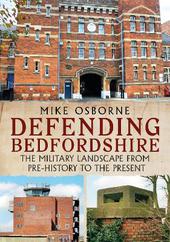
|
Defending Bedfordshire: The Military Landscape from Prehistory to the Present
Paperback / softback
Main Details
| Title |
Defending Bedfordshire: The Military Landscape from Prehistory to the Present
|
| Authors and Contributors |
By (author) Mike Osborne
|
| Physical Properties |
| Format:Paperback / softback | | Pages:264 | | Dimensions(mm): Height 234,Width 156 |
|
| Category/Genre | Military history |
|---|
| ISBN/Barcode |
9781781558317
|
| Classifications | Dewey:942.56 |
|---|
| Audience | |
|---|
| Illustrations |
124 colour photographs and 7 maps
|
|
Publishing Details |
| Publisher |
Fonthill Media Ltd
|
| Imprint |
Fonthill Media Ltd
|
| Publication Date |
24 June 2021 |
| Publication Country |
United Kingdom
|
Description
Over the centuries, proximity to major routes---the Great North Road, the Icknield Way, and Watling Street---has made Bedfordshire strategically important. Iron Age hillforts occupied significant locations, and castles consolidated Norman control after 1066. In later medieval times, two major events occurred: in 1224, the siege of Bedford Castle marked Henry III's attempt to reimpose royal authority after the chaos of John's reign; and the Second Battle of St Albans in 1461 was a major defeat for the Yorkists. During the wars of the twentieth century, the county's industrial base supported the armies fighting overseas. In the First World War, the county contributed significantly to the birth of the RAF as well as provided the base for the Home Defence armies. In the Second World War, its airfields despatched RAF and USAAF bombers over the continent, but the major activity was the secret war largely associated with the Bedford Triangle. After 1945, aeronautical research continued at RAF Thurleigh/Twinwood Farm and electronic intelligence-gathering was developed at Chicksands. 'Defending Bedfordshire' seeks to explain the significance of this dense concentration of military sites to be found in a relatively small county.
Author Biography
Dr Mike Osborne's interest in fortification began with childhood visits to castles. It has developed over the years to include all aspects of the topic from Iron-Age forts to Cold War bunkers. He was a volunteer-coordinator for the Defence of Britain Project recording the military structures of the twentieth-century. After a thirty-year-career in education he took early retirement and since then has produced nearly twenty books. Topics include: Civil War sieges and fortifications, drill halls, twentieth-century military structures, a series of county surveys of defences and the best-selling 'Defending Britain'.
|